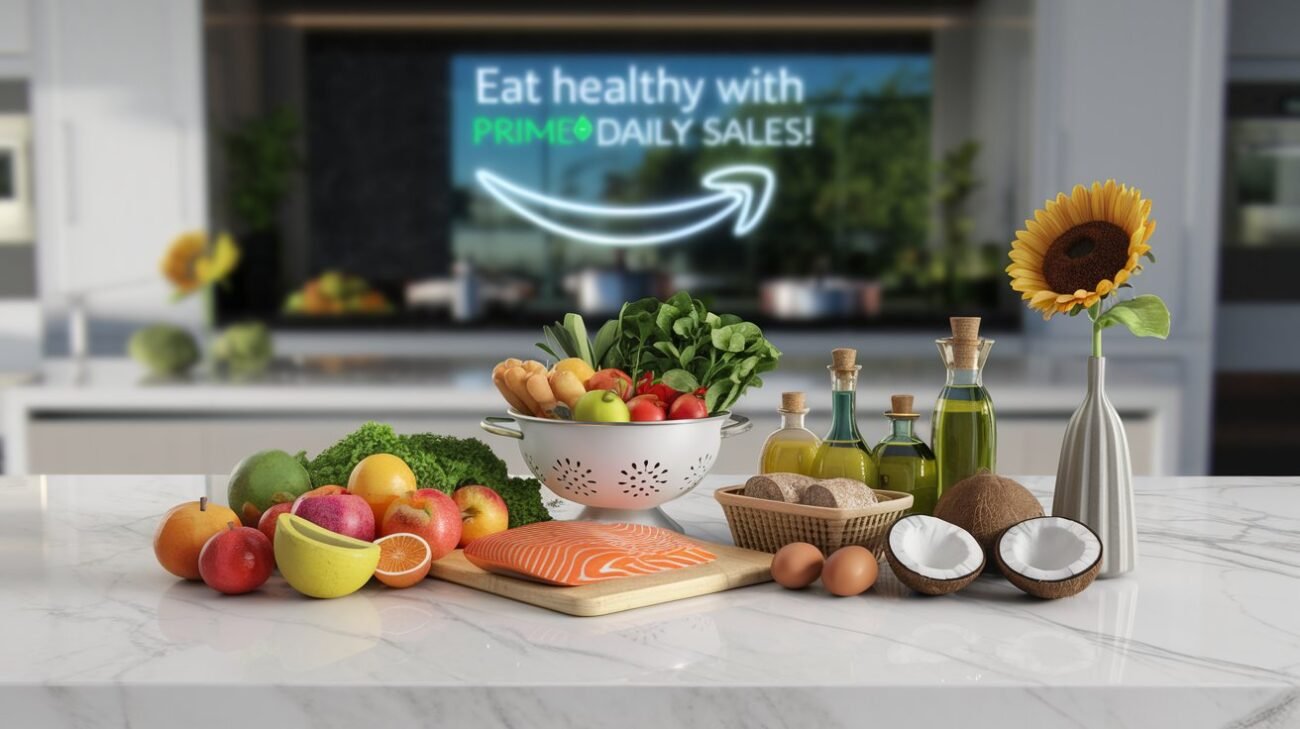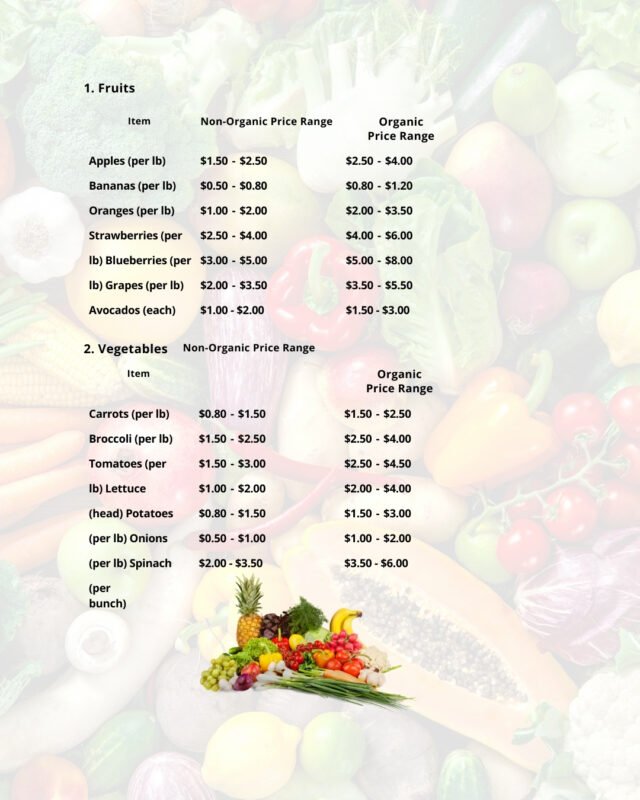Amazon Prime’s Sweet Secret: How I Scavenged Discounts and Dumped My Blood Sugar!

Image by Dr. Mors; generated by Ideogram AI
Amazon Prime: it’s not just about free shipping anymore. This membership, which started as a way to get your packages faster, has evolved into a treasure trove of benefits that extend far beyond your doorstep. But for me, it became a lifeline when my health took an unexpected turn.
When my doctor uttered the words “prediabetes” and “metabolic syndrome,” my world shifted. Suddenly, I was facing a future of complex meal plans and strict dietary requirements. But there was a problem: as I was planning my health revolution, food prices were skyrocketing. My carefully crafted meal plans, designed to keep my blood sugar in check and metabolism humming, seemed doomed before I could even start. That’s when I discovered the hidden potential of my Amazon Prime membership—a potential that would not only save my wallet but possibly my health too.
Little did I know that my Prime membership was about to become my secret weapon in the battle against prediabetes and rising grocery bills. As I dove deeper into the world of Prime benefits, I uncovered a goldmine of discounts, deals, and strategies that would transform my approach to healthy eating.
- Here’s a general pricing range for common grocery items in the U.S., broken down by organic and non-organic varieties. Keep in mind that prices can vary significantly based on location, store, and season. This pricing is current as of September 2024; with these astronomical prices on fresh organic fruits and vegetables, there is no way I can implement my meal plans for my newly diagnosed conditions of ” prediabetics with metabolic syndrome” and my chronic leaky gut syndrome!

Discovering Prime’s Hidden Gems
When most people think of Amazon Prime, they picture brown boxes arriving at their doorstep within two days. But as I soon discovered, those boxes could contain much more than just books or gadgets—they could hold the key to managing my prediabetes without breaking the bank.
My first “aha” moment came when I stumbled upon Prime Pantry. This treasure trove of grocery and household items became my go-to for stocking up on non-perishable staples crucial to my new diet. Whole grain pasta, sugar-free sauces, and nutrient-packed snacks were suddenly available at prices that made my local supermarket seem like a luxury boutique.

Average prices of Organic daily foods nationwide
But the real game-changer? Whole Foods discounts. As a Prime member, I was entitled to exclusive deals at this health food mecca. Suddenly, organic produce and high-quality proteins weren’t just for special occasions. I could fill my cart with blood sugar-friendly foods without emptying my wallet.
And then there was Subscribe & Save. This feature not only ensured I never ran out of essentials like almond flour or chia seeds, but it also knocked an extra percentage off the already competitive prices. My meal plan’s foundation was secured, automatically delivered, and discounted—a trifecta of convenience, health, and savings.
But my exploration didn’t stop there. As I became more adept at navigating the Prime ecosystem, I uncovered even more features that proved invaluable to my health journey.
Explore and try Amazon Prime Benefits for Organic foods,super fresh and home delivery here
Deal-Hunting Strategies: Becoming a Prime Savings Sleuth
My journey from prediabetes panic to savvy Prime shopper didn’t happen overnight. It took time, patience, and a fair bit of trial and error to develop strategies that consistently yielded the best deals on the foods and products crucial to my health plan. Here are some of the techniques I found most effective:
- Mastering the Art of Price Tracking
- Leveraging Subscribe & Save Strategically
- Stacking Deals Like a Pro
- Timing Purchases with Prime Day and Other Events
- Exploring Amazon Warehouse and Outlet

Tips for Readers: Leveraging Amazon Prime for Health-Conscious, Budget-Friendly Shopping
As I reflect on my journey from prediabetes panic to Prime power-user, I want to share some key takeaways for those looking to make the most of their membership while prioritizing their health:
- Start with a Clear Health Plan
- Utilize Prime’s Health-Focused Features
- Set Up a Dedicated Health Savings Fund
- Embrace Meal Planning
- Be Flexible with Brands
- Invest Time in Deal Research
- Join Health-Focused Amazon Groups
- Don’t Overbuy
- Leverage Prime Video for Health Education
- Stay Patient and Persistent
By implementing these tips and remaining committed to your health journey, you too can transform your Amazon Prime membership into a powerful ally for both your wellbeing and your wallet. Remember, the path to better health doesn’t have to be paved with premium price tags – with a bit of strategy and the right tools, it can be as affordable as it is rewarding.
Meal Planning Options for Prediabetic or Metabolic Syndrome Candidates
There are many strategies for effectively planning meals, including keeping a food diary.Counting calories to control weight and carbohydrates to control blood sugar is one way
that is commonly used.Your diabetes healthcare professional will help you decide which approach is best for you as an individual.
Carbohydrate Counting
Carbohydrates are the main nutrient in food that raises your blood glucose level. If you follow a carbohydrate counting meal plan, you only need to count the carbs in foods.
You can choose to eat some of the foods on the list (meal plan) and use the serving size amounts, or you can choose to eat foods with bolded carb numbers and figure out which
ones will work for you.If you choose packaged foods with nutrition labels, just check how many grams of carbohydrates are in one serving. Servings from these high-carb categories are equal: starch, fruit, milk, and other carbohydrates (sweets). Talk to your doctor, a dietitian or another health professional if you need help deciding whether you should gain or lose weight– and which plan is right for you.
Here are a few tips to consider when planning your pre diabetic,diabetic and metabolic syndrome meal plans:-
1)Starches/Breads*(15 grams carbohydrate, 3 grams protein, 1 gram fat, and 80 calories per serving)
Carbohydrates give you most of the calories you need and a dependable energy boost.This food group also has lots of other important nutrients like vitamins and minerals as
well as fibre– which has many health benefits too! If we want to eat less fat when having starchy foods, it’s a good idea to not add extra fats such as butter or oil.
2)Fruits *(15 grams carbohydrate and 60 calories per serving)
Fruits are rich in essential vitamins and minerals, and they also provide fibre. If you
want to maximize your fibre intake from fruits, eat the peel whenever it is edible.
3)Milk and Milk Products* Milk and its products provide calcium as well as other minerals, vitamins, protein, and carbohydrates.Choose low-fat or skimmed options for better health: they contain less fat, fewer calories, and reduced cholesterol compared with whole-milk items.
4) Vegetables **(5 grams carbohydrate, 2 grams protein, and 25 calories per serving)
Vegetables provide essential nutrients and can also be a good source of fibre. A serving is considered to be 1 cup of raw vegetables, 1/2 cup of cooked vegetables or 1/2 cup of
vegetable juice. (Potatoes, corn and peas are classed with Starches/Breads because they contain more starch per serving than other vegetables. Those that have fewer than 20 calories per serving are listed with Free Foods in meal planning.
5) Sugars*(15 grams carbohydrate, or 1 Starch, or 1 Fruit, or 1 Milk)
If you count them carefully, you can have sugar and still control your blood sugar. The key is to limit sweets and fats by following Food Guide Pyramid
recommendations— so there’s room for more nutritious foods in your daily meal plan. And remember, portions of refined sugars can be quite tiny; check the Nutrition Facts
label for details.
6) Meat and Meats substitute*Most individuals can meet their daily protein requirements by consuming small
portions of meat or meat substitutes.Select low-fat options such as lean meats, poultry, fish and cheese over those with higher fat content to promote good health.
7)Fats**(5 grams fat and 45 calories per serving)
Fats contribute taste and moisture to dishes, but they provide little vitamins and minerals.All fats have small portion sizes. For a healthier heart and to reduce cholesterol levels,
choose unsaturated fats more frequently than saturated ones; their servings are also small. Purchase virgin organic olive oil, avocado oils for salad dressing and grilling.
8) *Free foods *You can have as many of these foods and drinks as you like– they all have less than 20
calories per serving. If there’s no serving size given, you can eat the item freely. If there is a serving size, you can have up to three servings a day but for better blood
sugar control, don’t have them all at once; spread them out across the day.
Drinks
Here are ten practical tips for staying hydrated while being mindful of calorie and sugar intake:
Use apps or reminders: Set alerts on your phone or use hydration tracking apps to remind you to drink regularly.
Prioritize plain water: Make water your primary beverage. It’s calorie-free and the best for hydration.
Set a daily water goal: Aim for about 8 cups (64 ounces) per day, adjusting based on your activity level and climate.
Use a marked water bottle: Track your intake with a bottle that shows how much you’ve consumed throughout the day.
Eat water-rich foods: Incorporate foods like cucumbers, watermelon, and zucchini, which have high water content but low calories.
Flavor water naturally: Add slices of lemon, lime, or cucumber to your water for taste without calories or sugar.
Opt for unsweetened tea: Herbal or green teas can contribute to hydration without added sugars or calories.
Limit alcohol and caffeine: Both can have a diuretic effect. If you consume them, balance with extra water.
Choose electrolytes wisely: If needed, look for low-calorie or sugar-free electrolyte supplements. Try “elete electrolyte” now available on amazon.
Time your hydration: Drink water before, during, and after meals to aid digestion and promote fullness.
Fruits
Cranberries or rhubarb, no sugar added 1/2 cup,Spreadable fruit, no sugar added 1 tsp
Vegetables
Celery,Cilantro,Cucumber
9) Shopping *Use nutrition labels to find out what percentage of a food’s calories come from fat. Both protein and carbohydrates (sugars and starches) have just four calories
per gram. Fat has about nine calories per gram. This is why foods that are high in fat are also high in calories. To see if a food is high in fat, multiply the number of
grams of fat by nine. If more than about 1% of the calories come from fat, it is a high-fat food. Such foods should be used sparingly or not at all.
For example:Four crackers: 152 calories; 4 grams protein; 16 grams carbohydrate; 8 grams fat x 9= 72 calories. Thus, 72/152 calories (almost 50%) come from fat, making these crackers a high-fat snack!
10) Menu ideas* *(These can be modified in many ways). Just use your imagination!
Chili: An Exceptional Twist–yes chilling!
To have an exceptionally special experience with Chili, combine ground turkey, spicy
sausage and a dash of Texas Pete hot sauce. Heat it up and put it in a bowl.
Add freshly chopped tomatoes, onions, basil and shredded sharp cheddar cheese on top.
When you taste all these flavours together, you will be amazed. WOW!
Tuna Salad with a Kick (Or Try Chicken or Shrimp)
Include your regular ingredients, but also mix things up with chopped green grapes or
strawberries– they add sweetness and a new texture. For extra crunch, how about
shredded carrots or walnuts?
And don’t miss out on sharp cheddar cheese, finely chopped drained tomatoes, red
onions, basil leaves and sliced hard-boiled eggs. To serve: arrange spoonfuls onto
cucumber slices, or into hollowed-out large tomatoes or green peppers.
Finish with more grated cheddar and white pepper– it’s a salad worth saying ‘OMG’ for!
The Ultimate Baked Salmon
If you choose to use a different fish, or if you prefer salmon, this meal will still be
amazing. Cook it in a small dish– or wrap the fish in foil– so all the juice stays inside!
Cover the fish with chopped strawberries (or blueberries and strawberries) plus some
onions and a good squirt of honey mustard or Dijon.
Don’t overcook it; just bake until everything’s nice and tender. The berries and mustard
may sound like an odd combination for fish– but one taste and you’ll be hooked!
Kielbassa Soup: Simplicity at its Finest
To make this delicious soup, take out your biggest pot (you won’t need water!) and
some frozen or canned stewed tomatoes. Peel the tomatoes and put them in the pot as
they start to simmer. Add potatoes, celery, carrots, turnips (or rutabagas), corn, and several pounds of
chopped kielbasa for a tasty broth. Shortly before it’s done cooking, throw in lots of
chopped basil and onions so their flavours really pop– no need for extra seasonings
though! If you want it creamier, sprinkle sharp cheddar on top just before serving. Be careful not
to let it boil after this point; taste often until everything has softened.
Apple Raisin Pork or Chicken: A Sweet Surprise
For a different take on your typical chicken or pork meal, place the meat on top of some
golden raisins in a baking tray– or, if using parchment paper, surround it with raisins
before wrapping everything in foil. Alternatively, cover the meat with sliced apples; add another layer consisting solely of
onions and then drizzle honey, mustard, Dijon BBQ sauce over everything. Be daring!
You deserve it.Now cook the dish and be prepared to be amazed. And when it’s done…? Well then you
lucky person, just sit back and enjoy.
Remember you can still enjoy what you love to eat but in moderation and with reduced calories. Shop and try different foods at discount grocery stores, farmer’s market or online membership markets for healthy nourishment. To your Good Health!
Yogin Maku
Yogin Maku can be found taking care of her five dogs, three cats, and several chickens on her farmette. When she is not practicing yoga, she is out foraging for mushrooms and herbs. Passionate about healthy living, sustainable eating, and mindfulness, she enjoys creating nutritious meal plans that are both affordable and accessible. As an affiliate, Yogin may earn commissions from qualifying purchases made through links in this blog. Always consult with a healthcare professional before making any major changes to your diet, especially if managing conditions like prediabetes or metabolic syndrome.

Image generated by Dr. Mors on Ideogram
